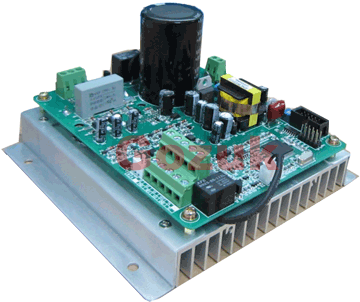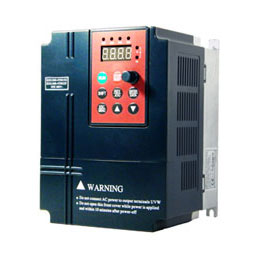How to know if the bearing of induction motor is healthy or not?
I was rather impressed by a good quality acoustic (expensive!) analyser I used. Portable so can use on many items, as well as steam traps etc. We know the ball race frequency at certain speeds so it can detect inner or outer race failures etc. very comprehensive. I am not a specialist in this instrument, but my opinion is it can be earlier detection than other methods such as vibe or thermal, sometimes.
The simplest answer is actually two things.
1) Observe the bearing (and lubricant) temperatures. Are they starting to trend away from "normal" ... particularly upward? If so - there may be a problem.
2) Observe the acoustical sound of the bearing (using a very simple probe, like a wooden or steel dowel. or even a screwdriver). If it starts to sound different than normal, then things need to be examined more closely.
If it comes to having to take a more in-depth look at the bearings, the best thing is to use a vibration analyzer that will allow both waveform and harmonic amplitude/frequency measurement. You'll need to know the type of bearing, the bearing number (if not a sleeve bearing), and rotational speed of the shaft - as a minimum - to sort out what frequencies are of interest.
The simplest answer is actually two things.
1) Observe the bearing (and lubricant) temperatures. Are they starting to trend away from "normal" ... particularly upward? If so - there may be a problem.
2) Observe the acoustical sound of the bearing (using a very simple probe, like a wooden or steel dowel. or even a screwdriver). If it starts to sound different than normal, then things need to be examined more closely.
If it comes to having to take a more in-depth look at the bearings, the best thing is to use a vibration analyzer that will allow both waveform and harmonic amplitude/frequency measurement. You'll need to know the type of bearing, the bearing number (if not a sleeve bearing), and rotational speed of the shaft - as a minimum - to sort out what frequencies are of interest.
Post a Comment:
You may also like:
Featured Articles
Non-Enclosure Variable Frequency Drive ...
 No enclosure (cover), reducing installation space and cost effective. Widely used in All-In-One control cabinet. Keep the same ...
No enclosure (cover), reducing installation space and cost effective. Widely used in All-In-One control cabinet. Keep the same ...
 No enclosure (cover), reducing installation space and cost effective. Widely used in All-In-One control cabinet. Keep the same ...
No enclosure (cover), reducing installation space and cost effective. Widely used in All-In-One control cabinet. Keep the same ...Variable frequency drive application ...
 Variable Frequency Drive (VFD) can be used in lots of fields. Variable frequency drives are widely used to control the speed of ...
Variable Frequency Drive (VFD) can be used in lots of fields. Variable frequency drives are widely used to control the speed of ...
 Variable Frequency Drive (VFD) can be used in lots of fields. Variable frequency drives are widely used to control the speed of ...
Variable Frequency Drive (VFD) can be used in lots of fields. Variable frequency drives are widely used to control the speed of ...Variable frequency drive in HVAC ...
 Variable frequency drives (VFD) have been used for HVAC systems in buildings for more than 40 years. But only in recent years, ...
Variable frequency drives (VFD) have been used for HVAC systems in buildings for more than 40 years. But only in recent years, ...
 Variable frequency drives (VFD) have been used for HVAC systems in buildings for more than 40 years. But only in recent years, ...
Variable frequency drives (VFD) have been used for HVAC systems in buildings for more than 40 years. But only in recent years, ...Variable Frequency Drive Harmonics and ...
A discussion of the benefits of variable frequency drives often leads to a question regarding electrical harmonic distortion ...
Three phase inverters
 In the variable frequency drive rectifier paper, it explains how to go from three phase alternating current voltage to a direct ...
In the variable frequency drive rectifier paper, it explains how to go from three phase alternating current voltage to a direct ...
 In the variable frequency drive rectifier paper, it explains how to go from three phase alternating current voltage to a direct ...
In the variable frequency drive rectifier paper, it explains how to go from three phase alternating current voltage to a direct ...
VFD manufacturers
